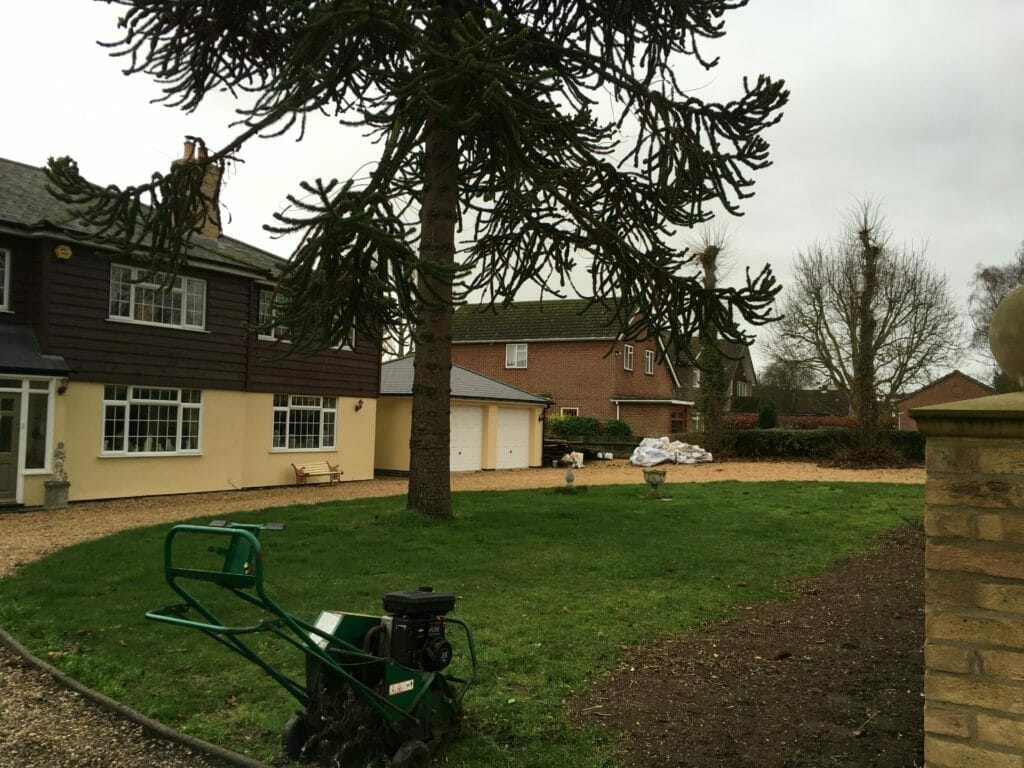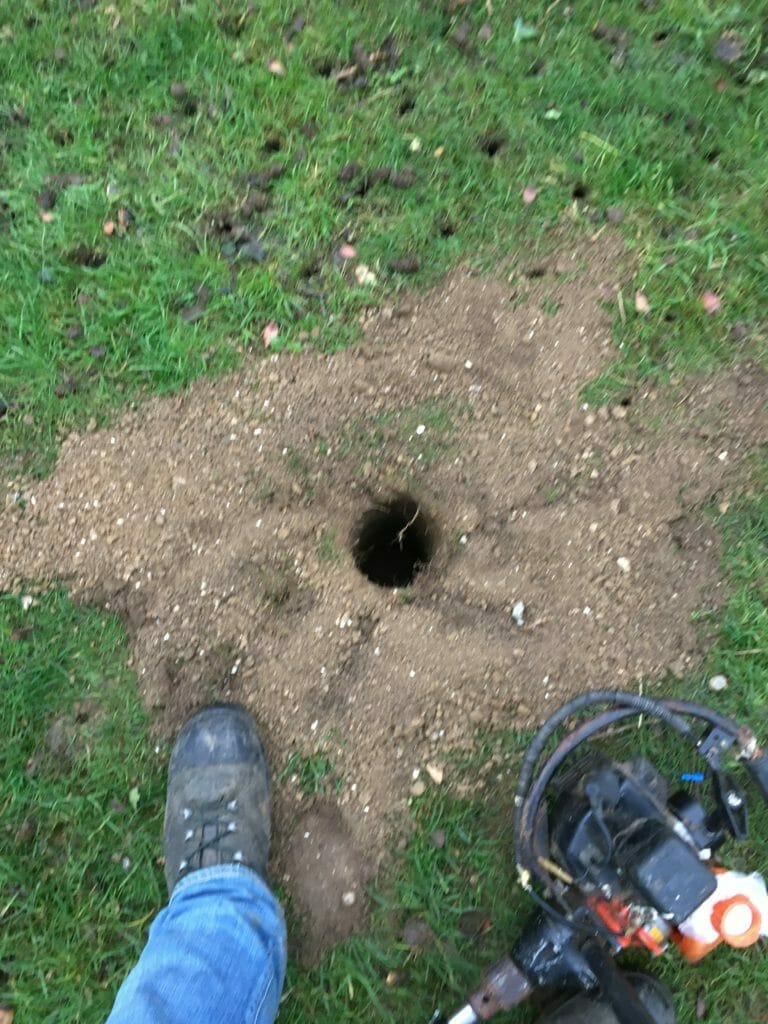As the title suggest, this month is about some of the soil work we’ve been carrying out.
This has all been with the view of actually helping some trees help themselves, rather than hacking lumps off them or felling them because they look a bit sick.
In truth I can never see the where the mindset of reducing or pruning helping with the long term health and well being of a tree came from. Might make them look a bit better to the eye or fit better in the garden, but having a positive contribution to its health I dunno, I have some of the kit to test whether it can, but as of yet I’ve never carried out.
You don’t tend to see the average Tree Surgery company do this kind of work but we’re not the average tree company that has employees with a few chainsaw qualifications and not much else in the way of tree education.
Any way this week we’ve had some of the kit that we use to help out to play.
Some of its isn’t what you see other firms use, some of its a little bit outside of the box but contributes to the overall soil health so I can’t see why you wouldn’t use it, but by having some different bits of equipment it means we can actually tailor the process to the job requirements, soil type and tree variety, and some of it is just so we can actually see whats going on before we start. There’s no point in messing about without knowing whats going on as you cant form a plan and your doing things for the sake of doing it without knowing whether it will actually help.
So we use a penetrometer, a tool worth having if only for its name, a pH tester, dutch auger and soil nutrient testing kit. All this gives us an idea of the level and depth of compaction, the soil type, the availability of nutrients and the acidity or alkalinity of the soil. Then depending on what we find we use, without fail on every site that has grass beneath the tree, the hollow coring machine followed by either the old fashioned petrol soil auger, the air spade or, the built in the shed because I couldn’t find one to buy anywhere, terravent/air injection soil fracturing machine.
So we picked the tool and method to suit the conditions.

This time out we used the hollow corer and petrol auger. The site conditions, soil type and level of compaction mean’t that the air spade would have achieved anything, apart from upsetting the customer or not getting the job because we had to remove all the grass, and the air injector wouldn’t have worked with the soil type being compacted as hard as it was.

After boring we remove the waste soil and replace it with good quality soil, bio-char based organic tree fertiliser and worms. Worms will help enrichen the soil by processing organic matter and help decompact just by moving about, and all while me and you are asleep, with the fertiliser there to help give the tree a boost without using man made chemical fertilisers.
When all this is done, depending on the time of year, we’ll then use a soil drench of water soluble simple sugars to add a quick boost to the microbes, bacteria and fungi that are present in the soil.
This work will not give instant results but it does give long term benefits.
Next time we’ve got the air spade out I’ll do a write up on the process behind that and why I don’t tend to use it for decompaction work. With the air injector to follow next time that’s out.
If you’d like any more details then click here for the webpage that deals with this or fill out the contact form.
1 thought on “Lets fix some soil and help some trees!”
Comments are closed.